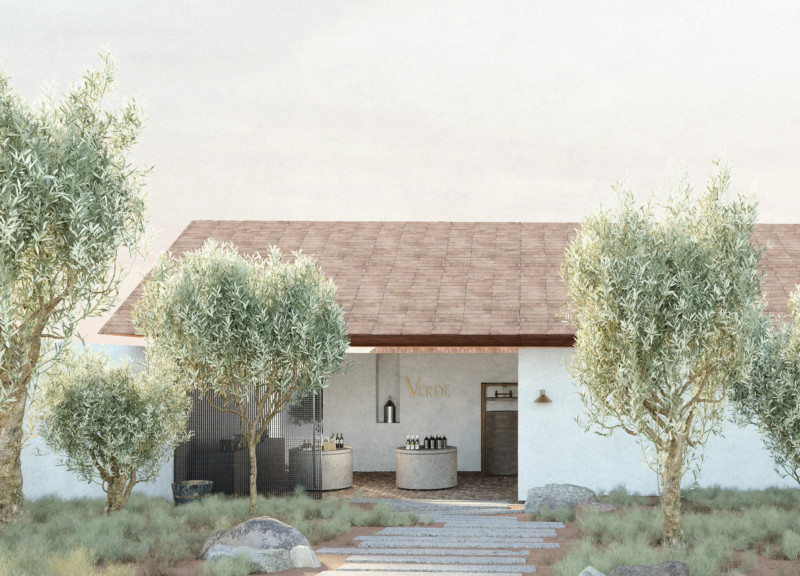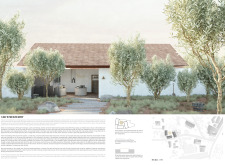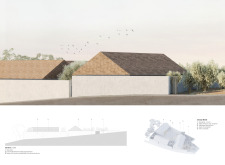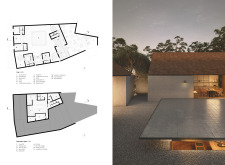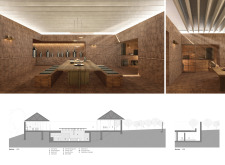5 key facts about this project
### Project Overview
The design located in Portugal emphasizes the cultural significance of olive production and aims to create a multifunctional space that bridges architecture, landscape, and traditional practices associated with olive cultivation. This facility is intended to foster visitor engagement with both the olive grove and the process of olive oil production, featuring spaces designed for tasting, communal gathering, and exploration.
### Spatial Organization and User Experience
The layout is strategically organized to facilitate interaction while providing distinct functional zones. Central to the design is the tasting room, which serves as the focal point for visitor engagement, promoting social interaction and cultural connection. Supporting facilities, such as the olive storage and wine cellar, enhance the dual focus on both olive oil and wine production, catering to both tourists and local producers. Outdoor communal areas, including a courtyard, are positioned to encourage exploration and appreciation of the surrounding olive grove. The sunken tasting area enhances the visitor experience by physically connecting users to the landscape while creating a cooler microclimate for tastings.
### Material Selection and Aesthetic Integration
Material choices reflect a commitment to local traditions and contemporary architectural practices. Terracotta bricks are employed for walls and flooring, offering thermal mass and evoking local craftsmanship. Plastered concrete adds structural integrity and a contrasting smooth finish, while timber elements bring warmth and connectivity to the overall aesthetic. Together, these materials create a tactile experience for users, fostering a physical interaction with both the building and its natural surroundings. The architectural forms, including gabled roofs clad in local tiles and large strategically placed openings, invite natural light and views of the olive grove, enriching the overall sensory experience of being within an active agricultural landscape.


